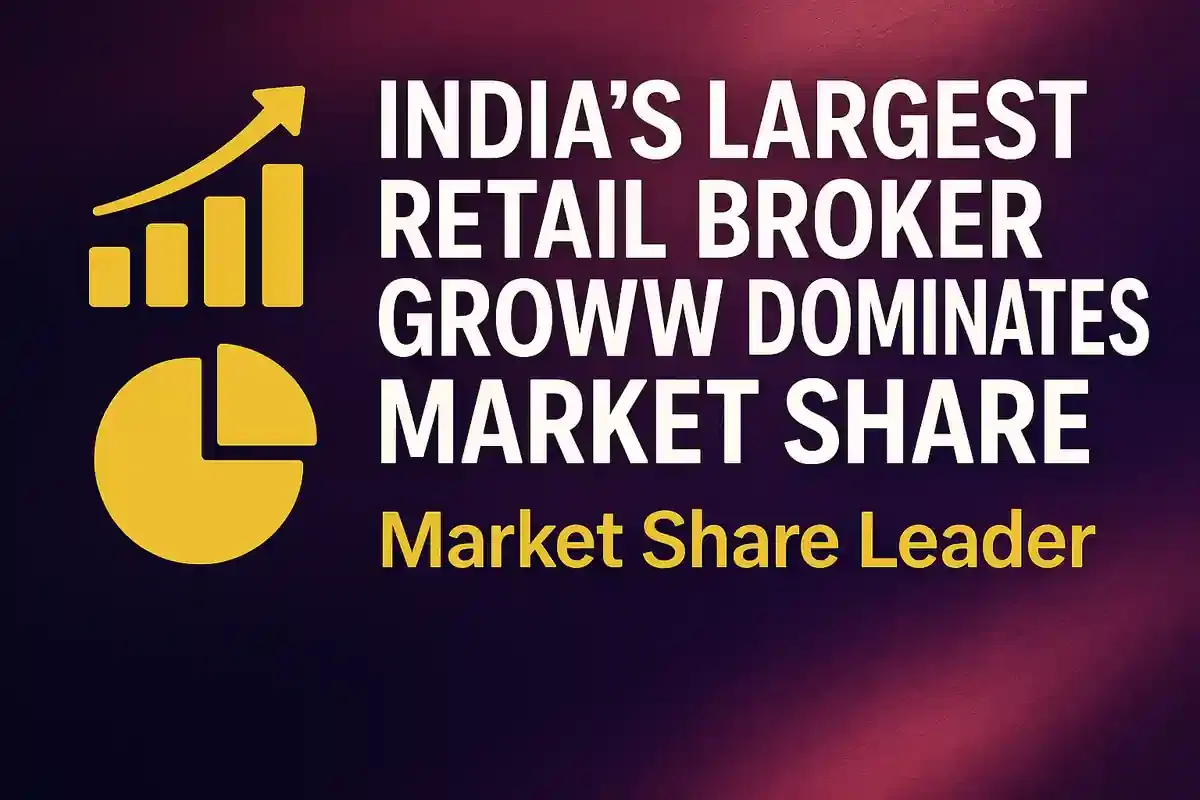Groww Becomes India's Largest Retail Broker with 26.3% Market Share
Banking/Finance
|
29th October 2025, 3:41 AM

▶
Stocks Mentioned :
Short Description :
Detailed Coverage :
Groww has emerged as India's leading retail broker, capturing a significant 26.3% market share in active clients by September 2025. This remarkable growth, with a compound annual growth rate (CAGR) of 101.7% between FY21 and FY25, far surpasses the industry's 27% and competitor AngelOne's 48.3%. Nuvama Institutional Equities reports that Groww accounted for a substantial portion of new clients added to the NSE in recent fiscal years. Its active client base in the cash segment grew by 47.7% by Q1FY26, boosting its share of retail average trading daily volume (ADTV) to 23.1%. Even with a dip in F&O (Futures and Options) clients, Groww's derivative ADTV share increased, indicating deeper engagement from its active users.
Groww derives most of its revenue from core broking (over 80%), a higher proportion than AngelOne. Despite a fall in its F&O revenue share, its financial metrics are resilient, with Nuvama estimating a relatively minor impact from potential drops in F&O orders. The company's profitability is boosted by a disciplined marketing spend (12-12.5% of revenue) and a high organic reach, leading to a low client acquisition cost (CAC) of ₹616 per client in FY25. This efficiency drives strong earnings before depreciation, amortization, and taxes (Ebdat) margins and a high return on equity (RoE).
Impact 8 This news is highly significant for the Indian stock market as it highlights the dominance of a major fintech player, impacting competitive dynamics within the financial services sector and investor sentiment towards online broking platforms. It indicates strong growth potential in India's digital investing landscape.
Explanation of difficult terms: CAGR (Compound Annual Growth Rate): The average annual growth rate of an investment over a specified period of time longer than one year. It is calculated by taking the nth root of the total growth of an investment over n years. Basis Points (bps): A unit of measure used in finance to describe the percentage change in a financial instrument or market. One basis point is equal to 0.01% or 1/100th of a percent. ADTV (Average Trading Daily Volume): The average value of securities traded on an exchange in a single day. F&O (Futures and Options): These are derivative financial contracts whose value is based on an underlying asset. Futures are obligations to buy or sell an asset at a predetermined price on a future date, while options give the buyer the right, but not the obligation, to buy or sell. Ebdat (Earnings Before Depreciation, Amortization, and Taxes): A measure of a company's operating performance before accounting for non-cash expenses like depreciation and amortization, and taxes. APAT (Adjusted Profit After Tax): Profit after tax that has been adjusted for certain items to provide a clearer picture of the company's ongoing operational profitability. RoE (Return on Equity): A measure of financial performance calculated by dividing net income by shareholders' equity. It indicates how effectively a company is using shareholder investments to generate profits. CAC (Client Acquisition Cost): The total cost incurred to acquire a new customer, including marketing, sales, and onboarding expenses.